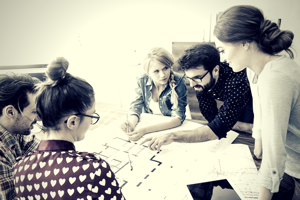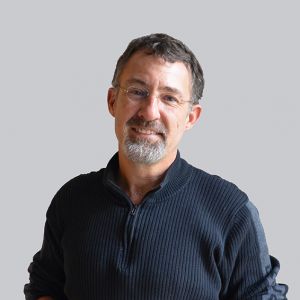
I wrote last week about the power of coaches to build better people and thereby to build better teams. I had an ulterior motive in mind, as I wanted to write about building teams and building trust.
When I inherited the team at Mazzetti, there was a lot of talk about lack of trust. I used to tell people I could not fix that by commanding it to happen; that we all must fix it by being trustworthy; that if each of us behaves in ways that build trust, we will grow to trust each other. And, that it does not happen overnight.
A couple of years ago, we started paying attention to emotional intelligence; trying to think about how we could create emotional environments that helped people to do their best. Two of the four fundamental values of Mazzetti are: Earn Trust and Team First. These are powerful statements indicative of our intentions to be and to create.
Clearly, “good” sports coaches, like the one who has so impacted my son’s soccer team, know how to do this and have much to teach us.
Last week, an article in the Sunday New York Times talked about new research from Google on this topic. The gist of the research (but please read the article) is that good teams consistently outperform other teams in everything. And the one necessary element to create a good team is what they call psychological safety. That is, do people feel safe to talk, to interact, to brainstorm, to throw stupid ideas on the table. And does everyone on the team contribute to the building of psychological safety via communication and empathy.
Earn Trust, Team First, Emotional Intelligence.
Psychological Safety through communication and empathy.
It’s all the same, really, and it works. Last week, I wrote about how it impacted a team of high school boys, and this week, I want to write about a client.
We have a very important client in the Southeast part of the country (I don’t have permission to use their name, so they will have to supply it if they want to).
I have been working with this client for about two years, now, to develop a Strategic Energy Plan. In parallel, they have a separate initiative on which we are working with another firm to execute–to implement a number of energy saving initiatives and retro commissioning of some of their buildings. Their intention is to use that project to seize immediate, impactful financial savings, but to use the five-year plan to build on their initial success, so it isn’t a one-time flash in the pan. Rather, this is to be the cornerstone of a new edifice of continuous improvement in how they buy and use energy resources.
The thing is, this five-year strategic plan is like no other I have ever done before, and it has created a new model for me, for how these things should be done.
We have been working on this five-year plan for the past two years. Our work has evolved over that time, working with their leadership through a series of workshops to frame and develop various elements of what has become their plan.
Now, I have produced many (what I thought were) good energy and other strategic plans over my career, and I have seen even more produced by other people. All of us consultants claim to not want to produce just another plan that will gather dust, but largely, they all do.
Not this one. And the main reason is two-fold–two closely related ideas that will make this organization successful in actually implementing their vision.
First, the process was a series of carefully choreographed and carefully spaced workshops. It was NOT me with a team of experts in a vacuum, creating a magical answer for them. We WORKED through the challenges, identifying possible solutions. And between workshops, they were continuing to work, to do things, to move their various initiatives forward. Each workshop was an opportunity to celebrate, to learn from and build upon, and to accelerate what they were doing. These workshops were about content creation, yes. But they were also about building psychological safety–trust and team first, communication and empathy–not something that happens over night, but something that happens over time.
At the end of the day, I am kind of embarrassed that our five year plan is mostly the notes we have taken from their mobilized collective intelligence. I was able to leaven their thinking with expertise here and there, but mostly what we brought was a partnership and a shared-coaching with their remarkable leadership to produce shared learning. The research is pretty clear – people learn from experience, not from lectures or fancy bound five-year plans.
And so, like my son’s soccer team who played their last game, my current assignment with this client is coming to an end (what an emotional time for me!) I can only hope that I was half as good as Isaac’s soccer coach, and that we were able to help them to become better as a team.
At the end of the day, I will leave them, yes, with a timeline of things they should do–with a new set of job descriptions, with a governance structure that will help them to continue their work, with a 200-page beautiful document. But the most significant thing we did is probably not something we can measure or count in pages; the most significant thing we have participated in is building that team, so they can do the work.
Interested in what you see? Subscribe to receive monthly news and information
more tailored to what you need.

